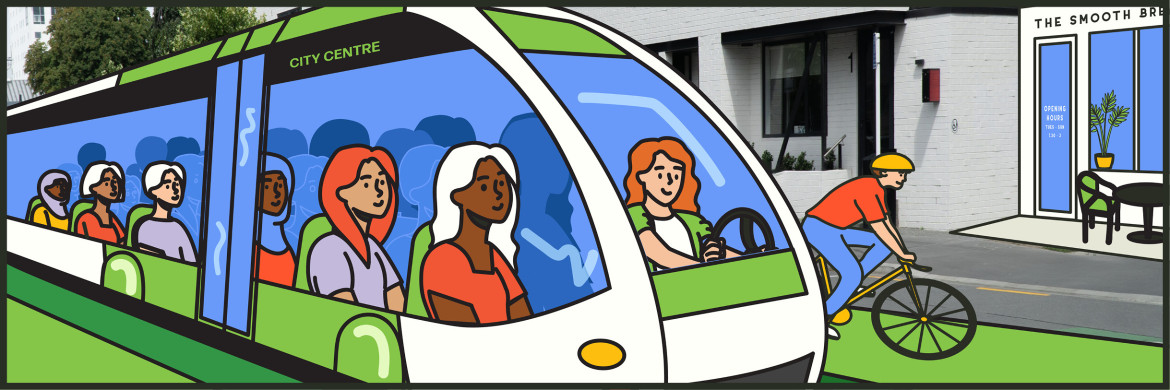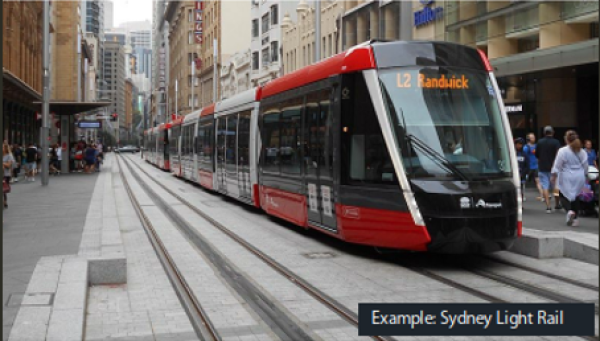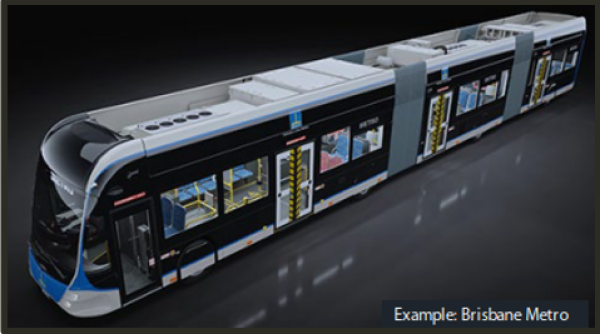Mass Rapid Transit means moving more people, faster and reliably, to their destinations. It operates on dedicated routes, ensuring speed, frequency, and capacity. We're exploring various vehicle options and infrastructure to make this vision a reality.
Mass rapid transit systems can take different forms, but in general, they operate on a permanent route (road or rail) that is separated from other traffic.
Mass rapid transit systems typically have:
- Priority and dedicated right of way: enabling reliable travel by avoiding conflicts with other vehicles.
- Speed: travel times that are faster than other options - ideally travel to and from the CBD at least as fast as the private car.
- Frequency: enable users to 'turn up and go' at most times of the day.
- Reliability: consistently on time.
- Capacity: allows the movement of large numbers of people in a short amount of time.
Mass rapid transit is a project that could help to meet our communities’ aspirations for a well-functioning and sustainable city that is easy, safe, resilient, healthy, and enjoyable to live in and move around in the future.
The mass rapid transit indicative business case – turn up and go – investigation will identify whether a future investment in mass rapid transit in Greater Christchurch is justified, and its most suitable route into the city.
We want to support and encourage the urban form changes our communities have asked for - more housing, jobs and activities that can be accessed easily in central and suburban centres.
Previous work on mass rapid transit has found that its viability is very dependent on intensification occurring along the corridors/around the stations.
Mass rapid transit is just one possible part of a wider integrated and effective public transport improvements plan for Greater Christchurch. If we decide to progress mass rapid transit, it will not get underway immediately. We need to start planning now so we will be ready when we need it in the future.
We investigated several routes for a new public transport service, and we evaluated each. After a lot of analysis, we have developed a preferred route connecting the central city to Belfast in the north and Hornby in the southwest which we are calling the ‘turn up and go’ public transport service.
Why there?
About a third of Greater Christchurch's population could live along these corridors in the future, promoting growth in the right places and enhancing access to employment hubs. Improved park 'n' ride facilities and increased bus services will bolster connectivity between districts and the central city.
Read the 2021 GCP Interim Report(external link) which illustrates the importance of integrating land-use and mass rapid transit decisions.
We’re still exploring what type of vehicle will best suit this new service; both vehicles that run on rails or tyres are being considered. We're also looking at how we fit this service within our existing road corridors and how we could build and stage it.



